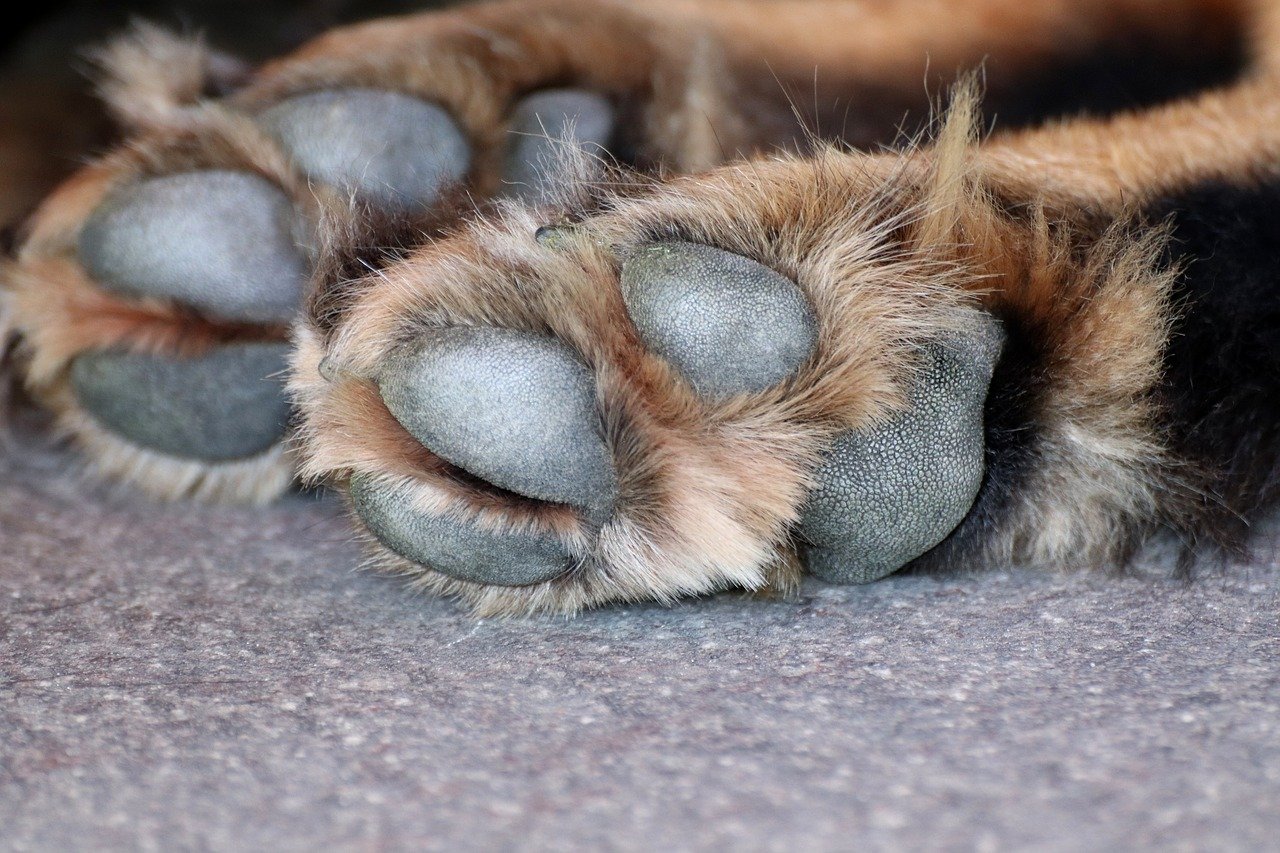You would probably expect to see webbed feet on animals that live in the water or spend most of their days swimming or paddling.
If you were to think of some examples then you would probably choose an amphibian such as a frog or a bird such as a duck or swan.
Interestingly some people wonder – Do spaniels have webbed feet? Maybe surprisingly, all dogs have some type of webbing between their toes, and, yes, spaniels do have webbed feet or paws, and there are some very good reasons for this.
All spaniels have webbed feet
Regardless of the type of spaniel that you have, you’ll find that he has webbing between his toes.
If you look carefully between each toe then you will find a thin membrane of skin, that is quite delicate which resembles webbing.
In some spaniels this webbing is more obvious than in others, typically the larger breeds such as the English Springer Spaniel tends to have thicker and more obvious webbing than the smaller breeds such as the Cavalier King Charles.
Why do they have webbing on their paws?
Just as humans have small amounts of skin between their fingers and toes, spaniels and other dogs have webbing between their toes. It is simply part of the composition of a dog’s paw.
Dogs have pads to help protect their paws and to provide them with grip and sensation as well as claws which are used to help with traction and jobs such as digging and scratching.
The webbing between a spaniel‘s toes helps him to be a more effective swimmer, it also serves to help to protect his paws from small irritations and foreign bodies such as thorns and mud.
A webbed foot or paw provides your spaniel with greater power and ability whenever he is swimming.
Imagine if you are swimming yourself, if you swim with your fingers apart then the water flows through your hand, whereas if you keep your fingers together and swim you generate more pulling power through the water.
It is the same principle with your spaniel, the webbing increases the surface area, making him a much better and efficient swimmer.
Webbing also plays an important role on soft surfaces. The increased surface area of your spaniel’s paws helps him to navigate mud, snow and other soft areas that he might need to cross.
A bit like a built in, mini doggy snow shoe.
Perhaps unsurprisingly most breeds developed for hunting and shooting, which includes all of the spaniel breeds, have webbing between their toes to help them be more effective workers.
Can webbed paws cause problems?
Webbed paws are at no greater risk than unwebbed dog paws but, due to the nature of activity and work that you normally find a spaniel undertaking, your dog can be at a greater risk of injury to his paws than a non-working animal.
You should check your spaniel’s paws regularly for any sign of damage, cracking, tears or other injuries.
I’ve found that during the summer months, grass seeds can be awful for spaniels. Often these seeds are sharp and can pierce and get stuck in the webbed area which can become painful for a dog.
The same can be said of thorns in the late summer and colder months, and if you live in areas where these are common then you should check your dog over frequently.
The same should be done if you see you spaniel licking or biting his paws, he could have any injury or infection.
Spaniel paws need regular care
Your spaniel’s paws perform a multitude of tasks and, in addition to walking, running, digging they also contain sweat glands and scent glands which are used for temperature control and marking.
It’s important to care for your spaniel’s paws to help to keep him in the best of health.
Frequent washing and massaging can help to prevent a wide range of problems and infections.
Keep on top of your spaniel’s paws with our paw care tips.
You can see our Top Paw Care Tips for Spaniels here..
Final words
Spaniels do have webbing between their toes.
It helps them to swim, navigate soft and loose ground and provides some protection for the toes.
Check your spaniel’s paws regularly for any cuts, damage and foreign bodies to help to keep them in healthy condition.










